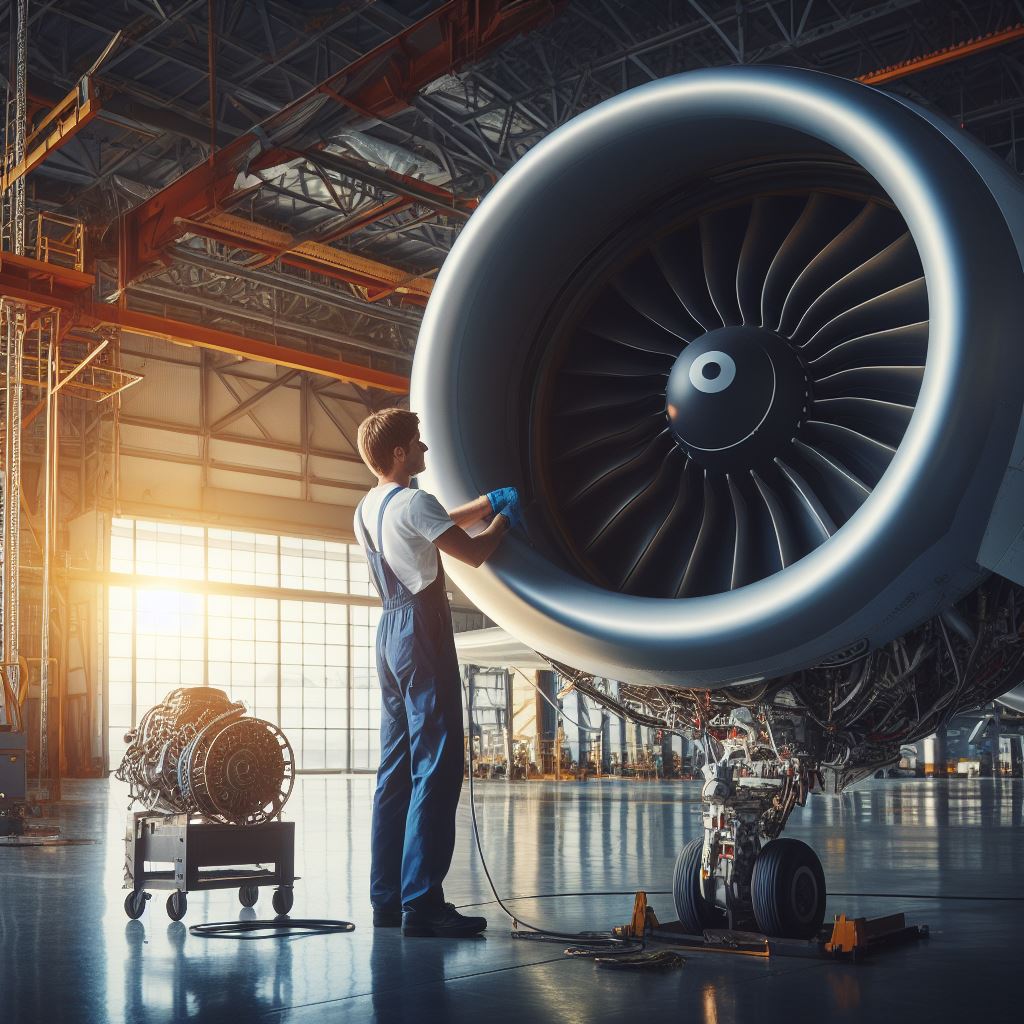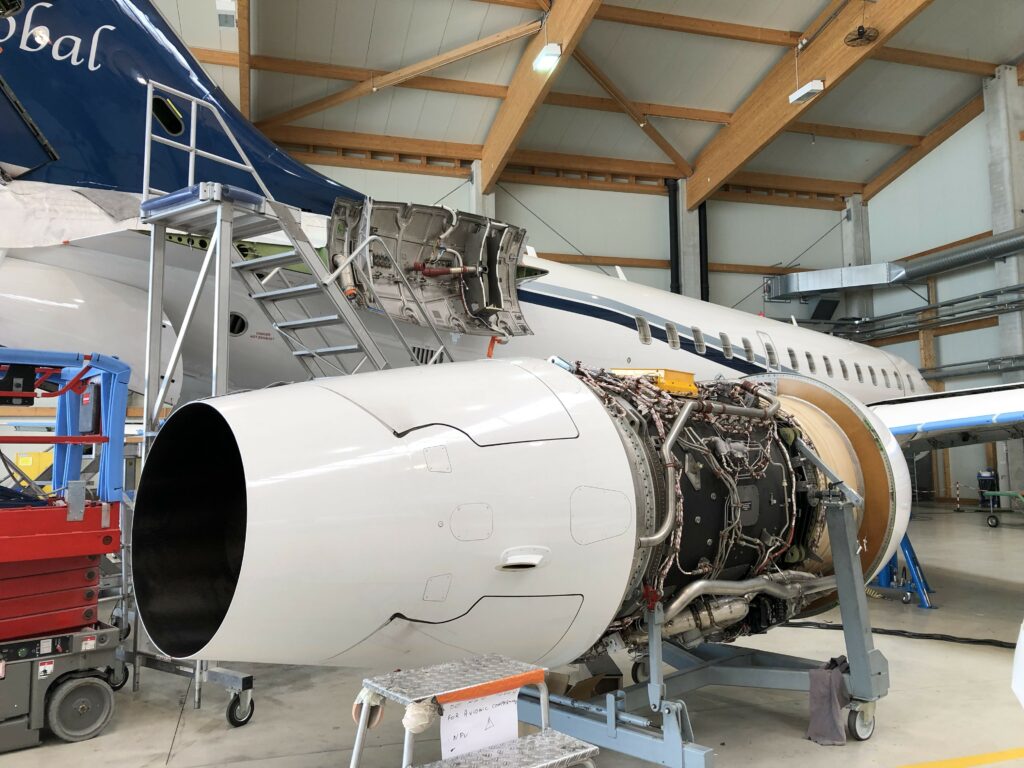EASA Part-145 Approval: The Key Steps to Launching an MRO

Follow RAVEN on Social Media! ✈️✈️✈️
Get aviation career insights and a stream of aviation learning content
The aviation industry stands as one of the most rigorously regulated sectors on a global scale. Within the realm of aviation, every facet is accompanied by a set of meticulously crafted rules and regulations. These regulations are not static; instead, they undergo constant refinement to guarantee the safety and quality of air travel for the general public. Aircraft maintenance is no different; it is subjected to the same level of scrutiny. The concepts of airworthiness and the upkeep of aircraft are integral considerations since the inception whenever new aircraft type is designed and developed.
Aviation regulations delineate the specific prerequisites that must be met to ensure that aircraft remain safe, airworthy, and dependable. Any organization seeking to offer aircraft maintenance services in the market must demonstrate their adherence to the applicable rules and regulations before commencing operations. In the European Union, these regulations are outlined in EU Regulation 1321/2014 Annex II (Part-145).
This article outlines the fundamental procedures to be adhered to when establishing an EASA Part-145 Maintenance Repair Organization.
Business Plan
Establishing a Part-145 Approved MRO is a formidable undertaking, characterized by its complexity and the considerable time it demands for thoughtful and thorough planning before commencing operations.
In the event that a maintenance, repair, and overhaul organization is to be established from the ground up, the foremost requirement is the creation of a robust business plan. This plan necessitates careful deliberation and decision-making by the organization’s shareholders or owner(s), encompassing critical factors such as the business’s location and the extent and size of its operations.
EASA Part-145 regulations are intentionally designed to be universally applicable, irrespective of the business’s scope, type, or complexity. What distinguishes one organisation from another in terms of compliance with the EASA Part-145 regulations is the manner in which these pertinent rules and regulations are put into practice. It should be noted that the ultimate approval at the conclusion of this process is significantly contingent upon the business’s scope and scale.
Establishing and Enrolling a Legal Entity
After formulating a comprehensive business plan, the shareholder must move forward to establish and/or officially register the business entity, often termed as a legal entity. A primary prerequisite for acquiring EASA Part-145 approval is to exist as either an individual or a legal entity. Seeking guidance from legal professionals is advisable in this regard. The process of registering and establishing a legal entity affords several legal safeguards, which is why opting for this approach is the most commonly chosen method.
Appointing Key Management Personnel
After completing the registration of the business entity, the shareholders must proceed to hire and designate key management personnel in accordance with EASA Part-145 requirements. The management structure should be tailored to reflect the intricacies of the planned operations. However, for a small to medium-sized business, the following key management positions are indispensable:
- An Accountable Manager, who often also holds the position of Chief Executive Officer within the organization.
- A Maintenance Manager, responsible for ensuring that the organization operates in compliance with the Maintenance Organization Exposition and approved procedures.
- A Compliance Monitoring Manager, tasked with overseeing the compliance monitoring function as part of the management system.
- A Safety Manager, responsible for supervising the development, administration, and maintenance of effective Safety Management processes within the management system.
Furthermore, the newly established organization must secure and possibly lease the facilities from which it intends to conduct its business operations. These facilities undergo scrutiny and inspection by airworthiness authorities to ascertain their suitability for the intended scope of operations. While line maintenance operations might not always necessitate facilities, this can become a limiting factor when adverse weather conditions affect business activities. In such cases, airworthiness authorities may require the organization to demonstrate access to hangar facilities to ensure that maintenance operations on aircraft can be conducted safely and effectively during adverse weather conditions.
Creating the Maintenance Organization Exposition and Associated Procedures
Once the management personnel are onboard, they must embark on the task of drafting and developing the processes and procedures essential for conducting business operations. These procedures are to be documented and consolidated within the Maintenance Organization Exposition (MOE). EASA 145.A.70, along with the associated AMCs and GMs, provides explicit guidance regarding the content and structure of the MOE. It’s crucial to bear in mind that the MOE will undergo thorough examination by airworthiness authorities and represents a vital prerequisite for acquiring EASA Part-145 certification and approval.
If the organization is situated outside the European Union, especially in such cases, you may refer to the guide published by EASA, available at this link. In situations where the organization is beyond the European Union, EASA will serve as the airworthiness authority responsible for certifying and overseeing the MRO.
It is also prudent to initiate communication and Part-145 application process with the relevant competent airworthiness authority during this phase. For organizations registered within the European Union, the certification and oversight are the responsibilities of the airworthiness authority designated by the state. However, for organizations registered and located outside the European Union, EASA, currently headquartered in Cologne, Germany, serves as the airworthiness authority.
Another critical undertaking at this stage is the recruitment campaign for competent and licensed personnel who will carry out the organization’s business operations. It is imperative not to underestimate the recruitment process, as there is a shortage of qualified personnel in various regions worldwide. Meticulous planning and execution of the recruitment process to secure the right human resources are essential for a successful acquisition of EASA Part-145 approval.
Securing EASA Part 145 Approval
Upon the submission of the MOE, application forms, and related documents to the competent airworthiness authority, the Competent Authority will commence the certification and audit process, ultimately leading to the attainment of EASA Part-145 Approval.
The competent airworthiness authority will meticulously review the submitted documents and may request corrections or amendments as they see fit. Additionally, the airworthiness authority will collaborate with the organization to establish and mutually agree upon the scheduling of the initial audit. This comprehensive airworthiness audit will assess all relevant aspects of the organization to ensure compliance with the prevailing EASA Part-145 rules and regulations. Preceding the on-site inspection or audit, the submitted documentation will be thoroughly examined. The duration of the on-site inspection depends significantly on the organization’s size, complexity, and the nature of its intended operations.
Following the conclusion of the on-site audit/inspection, the airworthiness authority will issue findings and observations in accordance with EASA 145.B.350 whenever instances of non-compliance with the rules and regulations are identified. After addressing and rectifying such non-conformities, the competent Airworthiness Authority will formally grant EASA Part-145 approval to the organization.
Business operations may commence only after the organization officially receives the EASA Part-145 Approval. Subsequently, the organization must consistently strive to ensure compliance with the applicable rules and regulations during the course of its business activities. The competent airworthiness authority will subject the organization to a compliance monitoring program to confirm ongoing adherence to the regulations.
Conclusion
In conclusion, achieving EASA Part-145 approval is a significant milestone in the aviation industry. It signifies your commitment to safety, quality, and compliance. As you embark on this journey, remember that meticulous planning, a robust business plan, and the right team are essential. Additionally, stay updated on evolving regulations, such as the introduction of Safety Management Systems (SMS), to ensure your organization’s continued success. EASA Part-145 approval is not just a certificate; it’s a testament to your dedication to providing safe and dependable aircraft maintenance services. With the right approach, you can navigate the complexities of the aviation sector and soar to new heights in this highly regulated industry.
Last but not least, Raven offers several training courses related to Part-145 or aircraft maintenance in general. Have a look at our course catalog and filter for “Aircraft Maintenance”.







Responses